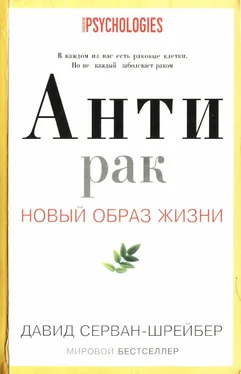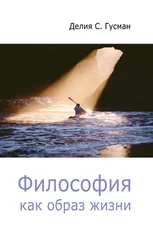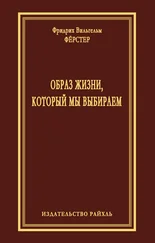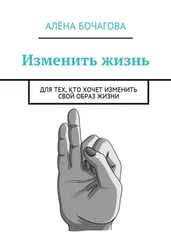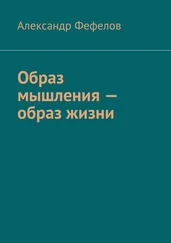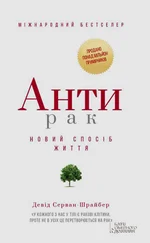Давид Серван-Шрейбер - Антирак. Новый образ жизни
Здесь есть возможность читать онлайн «Давид Серван-Шрейбер - Антирак. Новый образ жизни» — ознакомительный отрывок электронной книги совершенно бесплатно, а после прочтения отрывка купить полную версию. В некоторых случаях можно слушать аудио, скачать через торрент в формате fb2 и присутствует краткое содержание. Город: Москва, Год выпуска: 2010, ISBN: 2010, Издательство: РИПОЛ классик, Жанр: sci_medicine_alternative, Психология, на русском языке. Описание произведения, (предисловие) а так же отзывы посетителей доступны на портале библиотеки ЛибКат.
- Название:Антирак. Новый образ жизни
- Автор:
- Издательство:РИПОЛ классик
- Жанр:
- Год:2010
- Город:Москва
- ISBN:978-5-386-02111-5
- Рейтинг книги:4.26 / 5. Голосов: 34
-
Избранное:Добавить в избранное
- Отзывы:
-
Ваша оценка:
- 80
- 1
- 2
- 3
- 4
- 5
Антирак. Новый образ жизни: краткое содержание, описание и аннотация
Предлагаем к чтению аннотацию, описание, краткое содержание или предисловие (зависит от того, что написал сам автор книги «Антирак. Новый образ жизни»). Если вы не нашли необходимую информацию о книге — напишите в комментариях, мы постараемся отыскать её.
Антирак. Новый образ жизни — читать онлайн ознакомительный отрывок
Ниже представлен текст книги, разбитый по страницам. Система сохранения места последней прочитанной страницы, позволяет с удобством читать онлайн бесплатно книгу «Антирак. Новый образ жизни», без необходимости каждый раз заново искать на чём Вы остановились. Поставьте закладку, и сможете в любой момент перейти на страницу, на которой закончили чтение.
Интервал:
Закладка:
51. Weill, P., B. Schmitt, G. Chesneau, et al., “Effects of Introducing Linseed in Livestock Diet on Blood Fatty Acid Composition of Consumers of Animal Products,” Annals of Nutrition & Metabolism 46, no. 5 (2002): 182-91.
52. Ailhaud and Guesnet, “Fatty Acid Composition of Fats Is an Early Determinant of Childhood Obesity.”
53. Simopoulos, A. P., “The Importance of the Ratio of Omega-6/Omega-3 Essential Fatty Acids,” Biomedicine Pharmacotherapy 56, no. 8 (2002): 365-79.
54. Simopoulos, A. P., and N. Salem, “Omega-3 Fatty Acids in Eggs from Range-Fed Greek Chickens,” New England Journal of Medicine 321, no. 20 (1989): 1412.
55. Ip, C., J. A. Scimeca, and H. J. Thompson, “Conjugated Linoleic Acid: A Powerful Anticarcinogen from Animal Fat Sources,” Cancer 74, 3 supp. (1994): 1050-54.
56. Lavillonniere, F., V. Chajes, J-C. Martin, et al., “Dietary Purified cis-9, trans-11 Conjugated Linoleic Acid Isomer Has Anticarcinogenic Properties in Chemically Induced Mammary Tumors in Rats,” Nutrition and Cancer 45, no. 2 (2003): 190-94.
57. Bougnoux, P., A. Barascu, M.-L. Jourdain, et al., “Acide Linoléique Conjugué et Cancer du Sein,” Oléagineux, Corps Gras, Lipides 2005; 12(1): 56-60.
58. Dubnov, G., and E. M. Berry, “Omega-6/Omega-3 Fatty Acid Ratio: The Israeli Paradox,” World Review of Nutrition & Dietetics 92 (2003): 81-91.
59. Weill, Tous Gros Demain?
60. van Kreijl, C., Knaap, A., Busch, M., et al. “Ons eten gemeten. Gezonde voeding en veilig voedsel in Nederland.” Amsterdam NL: Public Health Department of the Netherlands; 2004. Report No.: RIVM report 27055509, available at Bohn, Stafleu, Van Loghum.
61. Nationaal Kompas Volksgezondheid. “Verkeersongevallen. Omvang van het probleem. Verkeersongevallen naar leeftijd en geslacht, 2003-2007”: Public Health Department, Netherlands, 2004.
62. Chajes, V., et al., “Serum Trans-Monounsaturated Fatty Acids Are Associated with an Increased Risk of Breast Cancer in the E3N-EPIC Study,” American Journal of Epidemiology (2008). DOI: 10.1093/aje/kwn069.
63. Hibbeln, J., W. Lands, and E. Lamoreaux, “Quantitative Changes in the Availability of Fats in the US Food Supply,” 5th Congress of the International Society for Study of Fatty Acids and Lipids, May 7-11, 2002 Montreal, Canada, 2002, p. 10.
64. Bougnoux, P., et al., “ Alpha-Linolenic Acid Content of Adipose Breast Tissue: A Host Determinant of the Risk of Early Metastasis in Breast Cancer,” British Journal of Cancer 70, no. 2 (1994): 330-34.
65. Maillard, V., P. Bougnoux, P. Ferrari, et al., “N-3 and N-6 Fatty Acids in Breast Adipose Tissue and Relative Risk of Breast Cancer in a Case-Control Study in Tours, France,” International Journal of Cancer 98, no. 1 (2002): 78-83.
66. Pollan, M., “Power Steer,” New York Times Magazine , March 31, 2002.
67. Pollan, M., “Unhappy Meals,” New York Times Magazine , January 28, 2007.
68. Pollan, M., The Omnivore’s Dilemma (New York: Penguin Press, 2006).
69. Cunnane, S., and L. U. Thomson, F laxseed in Human Nutrition (Champaign, IL: AOCS Press, 1995).
70. Weill, Schmitt, Chesneau, et al., “Effects of Introducing Linseed in Livestock Diet on Blood Fatty Acid Composition of Consumers of Animal Products.”
71. Weill, Tous Gros Demain?
72. Ailhaud, Massiera, Weill, et al., “Temporal Changes in Dietary Fats.”
73. World Cancer Research Fund, Food, Nutrition and the Prevention of Cancer: A Global Perspective (London: World Cancer Research Fund and American Institute for Research on Cancer, 2007).
74. Pollan, “Unhappy Meals.”
75. Pollan, The Omnivore’s Dilemma.
76. Ribeiro, C. A. O., Y. Vollaire, A. Sanchez-Chardi, et al., “Bioaccumulation and the Effects of Organochlorine Pesticides, PAH and Heavy Metals in the Eel (Anguilla anguilla) at the Camargue Nature Reserve, France,” Aquatic Toxicology 74, no. 1 (2005): 53-69.
77. “Campagne Detox du WWF,” World Wildlife Fund, 2005. (Accessed at www.panda.org/detox.)
78. Centers for Disease Control, Third National Report on Human Exposure to Environmental Chemicals (Atlanta: Centers for Disease Control and Prevention, 2005).
79. Davis, D. L., and B. H. Magee, “Cancer and Industrial Chemical Production,” Science 206, no. 4425 (1979): 1356.
80. Ibid.
81. Davis, The Secret History of the War on Cancer .
82. Davis, D. L., When Smoke Ran Like Water: Tales of Environmental Deception and the Battle Against Pollution (New York: Basic Books, 2004).
83. Clapp R., G. Howe, and J. Lefevre, Environmental and Occupational Causes of Cancer: Review of Recent Scientific Literature (Lowell, MA: University of Massachusetts Lowell, 2005).
84. WWF-France, ed., Planète Attitude—Santé (Paris, France: Seuil, 2006).
85. Steingraber, Living Downstream.
86. Belpomme, D., “L’Appel de Paris,” in Guérir du Cancer ou s’en Protéger (Paris, France: Fayard, 2005): 27-36.
87. Belpomme, D., P. Irigaray, A. Sasco, et al., “The Growing Incidence of Cancer: Role of Lifestyle and Screening Detection,” International Journal of Oncology 30, no. 5 (2007): 1037-49.
88. Kortenkamp, A., Breast Cancer and Exposure to Hormonally Active Chemicals: An Appraisal of the Scientific Evidence (London: Chemical Health Monitor Alliance, 2008).
89. Relyea, R. “A Cocktail of Contaminants: How Mixtures of Pesticides at Low Concentrations Affect Aquatic Communities,” Decologia 159 (2008): 373-76.
90. Irigaray, P., V. Ogier, S. Jacquenet, et al., “Benzo[a]pyrene Impairs Beta-Adrenergic Stimulation of Adipose Tissue Lipolysis and Causes Weight Gain in Mice: A Novel Molecular Mechanism of Toxicity for a Common Food Pollutant,” Federation of European Biochemical Societies Journal 273, no. 7 (2006): 1362-72.
91. Davis, D. L., et al., “Medical Hypothesis: Xenoestrogens as Preventable Causes of Breast Cancer,” Environmental Health Perspectives 101, no. 5 (1993): 372-74.
92. WWW-France, ed. Planète Attitude—Santé.
93. Environmental Working Group. A Survey of Bisphenol A in U.S. Canned Foods (2007). (Accessed March 23, 2009, at http://www.ewg.org/reports/bisphenola.)
94. LaPensee, E. W., et al., “Bisphenol A at Low Nanomolar Doses Confers Chemore sistance in Estrogen Receptor Alpha Positive and Negative Breast Cancer Cells,” Environmental Health Perspectives (2008). doi: 10.1289/ehp.11788 (Accessed at http://dx.doi.org/.)
95. Carwile, J. L., et al., “Use of Polycarbonate Bottles and Urinary Bisphenol A Concentrations,” Environmental Health Perspectives (2009).
96. Jin, H., et al., “High Dietary Inorganic Phosphate Increases Lung Tumorigenesis and Alters Akt Signaling,” American Journal of Respiratory and Critical Care Medicine 179 (2009): 59-68.
97. Cho, E., et al., “Red Meat Intake and Risk of Breast Cancer Among Premenopausal Women,” Archives of Internal Medicine 166, no. 20 (2006): 2253-59.
98. Norat, T., S. Bingham, P. Ferrari, et al., “Meat, Fish, and Colorectal Cancer Risk: The European Prospective Investigation into Cancer and Nutrition,” Journal of the National Cancer Institute 97, no. 12 (2005): 906-16.
99. Eikelenboom, C., “Proof of Polychlorinated Biphenyls in Milk,” Zeitschrift fur Lebensmittel-Untersuchung und Forschung 163, no. 4 (1977): 278.
100. Agence Française de Sécurité Sanitaire des Aliments, Avis de l’agence française de sécurité sanitaire des aliments relatif à l’évaluation de l’exposition de la population française aux dioxines, furanes et PCB de type dioxine, Agence Française de Sécurité Sanitaire des Aliments, 2005, Saisine no. 2005-SA-0372.
Читать дальшеИнтервал:
Закладка:
Похожие книги на «Антирак. Новый образ жизни»
Представляем Вашему вниманию похожие книги на «Антирак. Новый образ жизни» списком для выбора. Мы отобрали схожую по названию и смыслу литературу в надежде предоставить читателям больше вариантов отыскать новые, интересные, ещё непрочитанные произведения.
Обсуждение, отзывы о книге «Антирак. Новый образ жизни» и просто собственные мнения читателей. Оставьте ваши комментарии, напишите, что Вы думаете о произведении, его смысле или главных героях. Укажите что конкретно понравилось, а что нет, и почему Вы так считаете.
